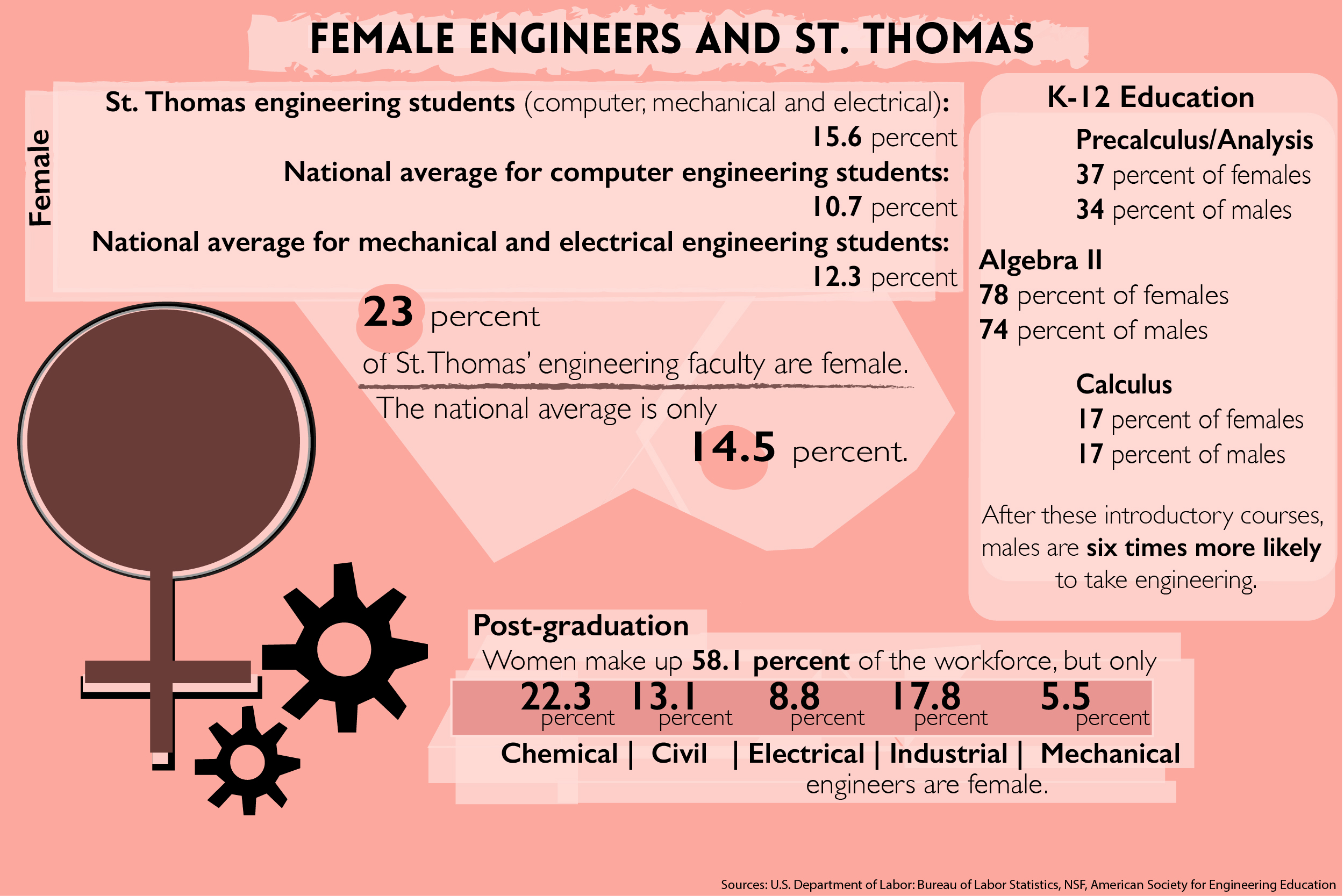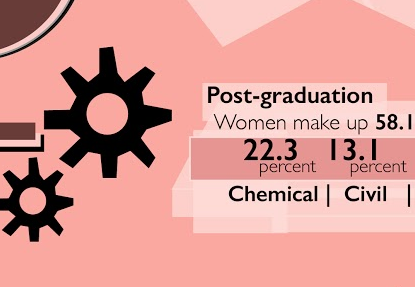
Professor Sarah Baxter may only be one of five full-time women faculty in the School of Engineering, but she still finds herself working with a higher proportion of women than is typical in an engineering program. The number of female students she teaches are proportionally higher, as well.
Baxter, who joined the faculty this fall, has seen first-hand the contrast between St. Thomas and other universities. At her former workplace, the University of South Carolina, she said 13 of about 120 faculty were women, only 10.8 percent.
At St. Thomas, 23 percent of full-time engineering faculty are women. This compares to the national average of 14.5 percent, which the American Society for Engineering Education reported in a 2013 study.
“It’s extremely rare to have – even on a small faculty like ours – to have this many women,” Baxter said. “That’s absurdly high.”
Don Weinkauf, dean of the School of Engineering, said the higher percentage of women reflects their qualifications, not any specific hiring programs.
“When we go into the search process, we look for the best people and instructors to put in front of our students,” Weinkauf said. “These five women have come up as the best candidates.”
Women students also find themselves in the minority in engineering programs across the nation.
Weinkauf said female student enrollment in St. Thomas’ mechanical, computer and electrical engineering programs is about 15.6 percent this year. The national average ranged from 10.7 to 12.3 percent for the three specialities, the American Society for Engineering Education study showed.
Weinkauf said the university would still like to increase female enrollment further.
“Those numbers still aren’t good enough for us,” he said. “We’ve moved the needle a little bit but not enough for us to be satisfied.”
Weinkauf added the program’s larger number of female faculty is one way to increase the number of female engineering students.
“That’s part of the equation,” he said. “Young women will want to model their success off of seeing their role models.”
Senior Quinn Mogil, a mechanical engineering student, said she appreciates the perspectives female faculty bring and thinks their presence will lead to additional female engineering students.
“I find it helpful knowing that there are other women I can talk to about issues that particularly affect women. They have experienced these things too and are able to share their knowledge and life experiences,” Mogil said. “I think others, too, will notice this and choose St. Thomas over other universities.”
Baxter said the presence of the engineering program’s female faculty validates the female students’ choices, even if the professors don’t have a direct relationship with them.
“It’s just the idea that there are this many women functioning as engineers in this department,” Baxter said. “The impact that you have is pretty profound, even when it’s not direct.”
Junior mechanical engineering major Angela Feyder said the presence of women in any type of engineering position is important for students to see.
“It’s great to see strong women doing professional engineering jobs, either in industry or academia,” Feyder said.
Freshman Mackenzie Garrett, an electrical engineering student, said she believes engineering has become a more open and accepting field because of the efforts of women before her.
“That has a lot to do with the strong female influences that have paved the way,” Garrett said. “Those influences are what encouraged me.”
Baxter said the large number of females in engineering professions, like the engineering program, shows that the role of gender is becoming less important.
“Maybe we’re getting to the point where you don’t have to notice the gender,” Baxter said. “You can just be a good or a bad engineer.”
Rebecca Marisal can be reached at mari2162@stthomas.edu.



